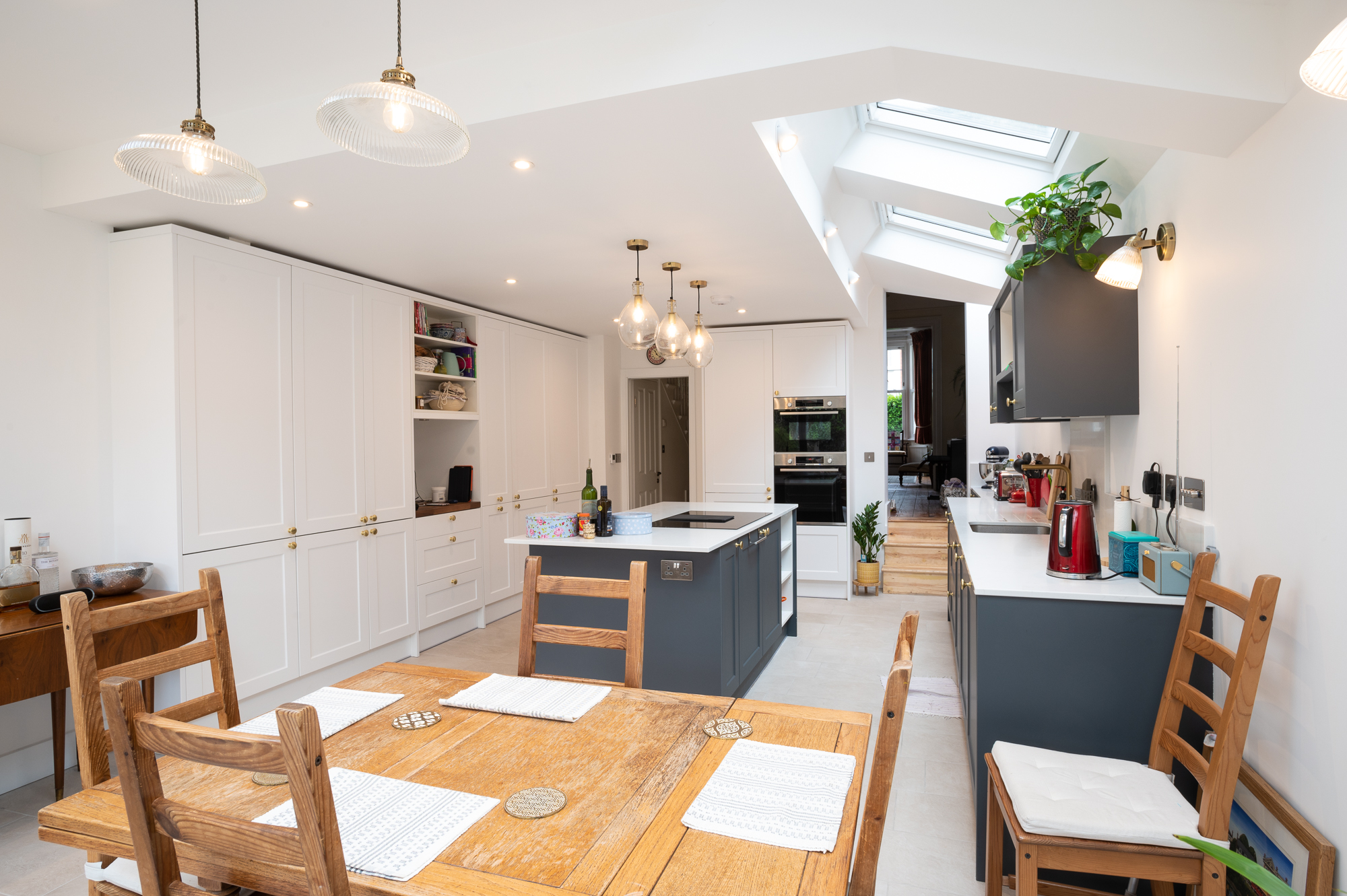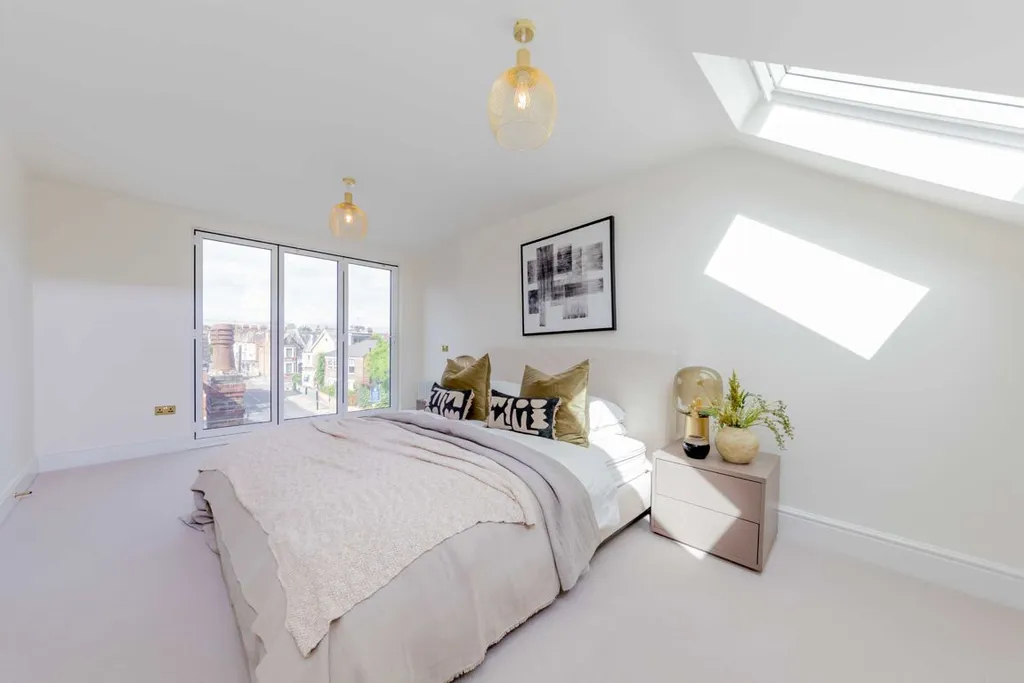There are millions of ways to design a loft conversion, but how do you pick the one that caters to your needs the most? The minimalist Scandi design may not work for all, and the old-fashioned extravagant furniture setup isn’t everybody’s cup of tea. Some just want a workable loft space that can accommodate as much stuff as possible. Genius loft storage ideas can turn small spaces into discreet hideaways for everything from clothes to Christmas decorations. So, to inspire your creative side, we give you the most practical designs that offer the best storage solutions.
Your beloved bed
No storage option is more convenient than your bed. Yes! Your bed. You can buy beds with built-in storage around it or get one custom-designed to fit your loft proportions. Beds with raised wooden platforms that feature shelves and cupboards can afford more storage without taking up too much of the loft floor space. Under-bed storage not only provides stashing solutions; it also saves you the trouble of having to hoover under the bed.
Wall-storage units
The loft walls do not have to showcase paintwork or picture frames if you need more space for storage. Use your wall space from top to bottom to install custom-built shelves and cupboards. You can find a design to arrange the wall storage units in such a way that it is aesthetically pleasing while utilising every irregular space that forms nooks and crannies. Add mirrors as wardrobe doors to add the illusion of doubled space and paint the wood in white or a lighter shade for more brilliance in the room. Low-level walls, too, can be used for loft conversion storage ideas.
Loft boarding
If you need to use your loft just for storage, loft boarding gives you 50% more space while also playing an efficient role in loft insulation. The existing timber joists that form the loft floor cannot support a heavy load. They are not there for storage purposes, so boarding-out your loft is the practical solution. If you are not going for a full conversion that creates a living space, a loft ladder is all you need to access your loft. It makes trips to the loft much more convenient to retrieve and store things and 100% safer than a ladder you have to fetch each time from the shed.
Under the Mezzanine storage
You can use under the staircase of a mezzanine level for storage with closets and cupboards. It not only gives you an extra level for a bed, a small home office, reading room, or dining area, it also allows for extra loft storage. The gradient of the staircase means you get storage units of different heights.
Double duty furniture
Some furniture performs not just one but two or more tasks. These can be mirrors with built-in shelves, a sleeper sofa, a room divider with shelves, or benches with hidden storage. When you need retail loft storage ideas, look for double-duty furniture.
How do you maximise space in a loft conversion?
The space-saving concept should play a central role in your design. It helps you determine the basic choices like wall shelves, cupboards, and wardrobes that need to be built in and customised. You should also think of pieces of furniture designed for storage. Pull-down and double-duty furniture work for all types of loft conversions used as bedrooms, home offices, kitchens, and living rooms. Even a loft bathroom can provide you with wall shelves and cupboards for you to store items. You can incorporate glass or mirror doors to make storage more appealing in the bathroom. Loft conversion storage ideas can even extend to mid-air. A suspended bed free up floor space an ordinary bed needs. You can custom design a tiny block staircase with a storage function to get to the bed and store things in it.
How do I organise my loft storage?
You can create a safe storage space even without converting your loft. But, it still needs your consideration to make sure what you store remain in their original condition. Before you can use your loft to its full potential, use loft boarding to ensure you have a sturdy and stable floor. It prevents things from falling off the loft into the house when you open the loft hatch, which can be highly dangerous. With loft boarding, you get the chance to put up shelves to use the vertical space as well in an organised manner. Plastic storage boxes with lids make ideal receptacles to stash away items without having to worry about pests, humidity, or damp getting to them. These are also lightweight, which means you can put more items in without adding to the weight. Labelling everything helps you find everything without having to waste too much time.
How much will it cost to convert a loft into a room?
The basic Room in the Roof costs £1150-£1350 per square metre. If you are looking for a full loft conversion with structural adjustments to the roof, you can choose a dormer, mansard, or hip to gable conversion styles.
Can any loft space be converted?
Almost all loft spaces are compatible for conversion. If yours is a period home, chances are you have the ideal roof proportions for the task. A 2.2m head height from the floor to the highest part of the roof is essential for an attic conversion. M shaped rafters of a traditional roof typically allow for this measurement. Converting your loft is Permitted Development, which means no planning permission is required as long as you stick to the guidelines. The regulations require you to;
- Not live in a conservation area or a listed property
- Not exceed the recommended volume allowance for each property type
- Build your loft conversion with similar materials to the original house
- Obscure-glaze side-facing windows
- Not include any verandas, raised platforms, or balconies in the new structure
- Not endanger any protected species such as bats
If your loft doesn’t measure up in size, you can always raise the roof or lower the ceiling to allow the recommended proportions.
Good Design & Build is London’s trusted period property specialist, led by expert architects, engineers, and builders.




